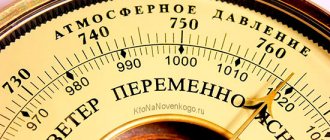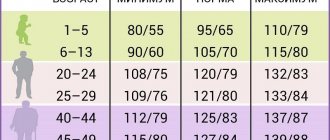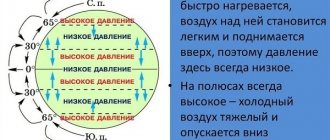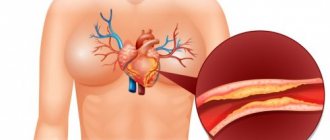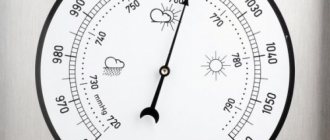The dense shell of air mass formed around the Earth is the atmosphere. In nature, everything is interconnected and balanced with each other, therefore, every human body is affected to a certain extent by atmospheric pressure.
Sudden surges in blood pressure are difficult for some, while others may not notice any changes at all. When exposed to established indicators in accordance with the norm for a person, the body will not feel external influence.
What is atmospheric pressure
The near-Earth air shell has a certain mass, so pressure forces act on all objects. A certain amount of oxygen is contained in tissue fluids in the human body, and thanks to this, external and internal pressure is balanced. That is why a column of air pressing on a person weighing 15 tons is not felt by the body.
The balance within the body is disrupted when air force changes, which can occur for various reasons. Pressure changes do not occur equally in different terrain conditions. Pressure parameters can be measured using special devices called barometers.
What is normal atmospheric pressure.
The device is made in the form of a metal box in which there is completely no air. As pressure increases or decreases, the box contracts or expands. The most commonly used are liquid barometers, in which the pressure level corresponds to the height of the mercury column.
Variability of air pressure depending on the height of the relief and other conditions
When measuring pressure, the influence of the main factors should be taken into account:
- height above sea level. When located at the same point according to geographical parameters, but at different altitudes, the pressure value will change in the following directions - when rising above sea level, the pressure will decrease, and when lowering, it will increase;
- temperature indicator. When the temperature is above 0 degrees, the atmospheric pressure will decrease. At temperatures below 0 degrees, atmospheric pressure will increase;
- humidity level. Increased liquid content in the air causes increased pressure. In dry weather, the pressure indicator drops.
The article shows the norm of mercury pressure.
Therefore, in the summer at night (when the temperature drops and humidity increases), the pressure increases. The main reason for the change in indicators is the change in air density due to the influence of these parameters.
Atmospheric pressure standards for humans
Pressure indicators are constantly changing and form separate conditional zones. The uneven heating of the earth's surface by the Sun contributes to the constant movement of air masses. In places where there are more air masses, the pressure increases, and in places where the air masses have left, the pressure decreases.
From the established norm, with an increase from sea level, the indicators will decrease.
To establish the conditional norm, the initial conditions were accepted: temperature 0 ° C, latitude 45 °. In this case, a mass of 1.033 kg presses on every 1 cm2 of the earth's surface. This mass can be balanced at a specific value of the mercury column of the barometer - 760 mm Hg. This indicator was accepted as the norm.
Being in a particular region for several years, the human body is able to adapt to certain climatic conditions. For residents of flat areas or slightly elevated regions, the range of 750-765 mmHg is considered normal atmospheric pressure.
For the population in mountainous, elevated areas, normal levels decrease.
Fluctuations within normal limits
Changes of up to 5 mm are considered normal, and our body copes with them absolutely calmly. In this case, the person does not experience any discomfort or unpleasant sensations.
Fluctuations of 5 to 10 millimeters of mercury can cause discomfort for people with poor health.
More sudden changes can be fatal.
How does low atmospheric pressure affect human health?
According to the classification of meteorologists, low pressure is considered a cyclone. When it occurs, there is a deterioration in weather conditions, precipitation occurs, cloudiness and excessive humidity are observed. This change leads to a deterioration in well-being, especially for those who have chronic diseases.
Atmospheric pressure, the norm for a person may vary depending on the region of residence, when decreased, becomes the cause of the following symptoms:
- The appearance of shortness of breath.
- Heartbeat quickens.
- Decreased heart beat force.
- People with visual impairments experience pain in the eyes, visual acuity worsens even more, and headaches appear.
- Lethargy, increased fatigue.
- There is a noise in the ears.
- Headaches, even unbearable.
- Feeling of lack of air.
- Weakness.
- Dizziness.
People with hypotension will feel especially acutely the decrease in atmospheric pressure. People with hypertension, on the contrary, most often begin to feel much better. For people with joint diseases, periods during which low blood pressure is noted become an impetus for the exacerbation of pathological processes.
Not only pain in the joints may appear, but even their functions may be impaired. In patients with mental illness, pathological symptoms may worsen at this time.
Health Hazard
Changes in atmospheric pressure are dangerous for weather-sensitive people, as well as sudden changes (rapid diving to depth, climbing mountains, or a sharp increase/decrease in pressure) for ordinary people.
Possible complications from fluctuations in atmospheric pressure:
- disturbance of psychological balance in an irreversible direction (schizophrenia, depression, psychosis);
- development of stroke due to increased intracranial pressure;
- development of heart attack in people with heart pathologies;
- irreversible impairment of mental activity due to lack of oxygen;
- development of asthma due to impaired oxygen metabolism and bronchial activity;
- formation of blood clots with subsequent blockage of blood vessels;
- as a result of decreased immunity, infection with a dangerous infection with the development of subsequent complications;
- deterioration of the condition of blood vessels with the likelihood of developing varicose veins or their rupture;
- irreversible changes in the quality of vision and hearing. Possibly to the point of complete blindness and deafness.
Fainting is also dangerous, since the result of a fall from loss of consciousness can be fatal.
How does high atmospheric pressure affect health?
During an increase in atmospheric pressure, meteorologists note the onset of an anticyclone. This period is characterized by windless, dry weather. Despite the fact that temperature surges are not typical for this period, the air is still largely saturated with the smallest aggressive substances.
It is not difficult for a healthy person to adapt to such weather, and adaptation occurs quickly. People who experience frequent episodes of hypertension are a particularly vulnerable population. Also, a negative reaction can overtake people with an increased tendency to allergic manifestations.
With a sharp change in blood pressure, a number of negative symptoms are observed:
- The appearance of lethargy and weakness.
- Decreased level of performance.
- Painful sensations in the heart area.
- Facial redness.
- Increased sweating.
- Blurred vision.
- Tinnitus.
- Pain in the head.
- Nosebleeds.
During this period, favorable conditions are observed for the life of pathogenic microorganisms, which can result in an outbreak of infectious diseases. This is due to a slowdown in the growth of immune cells when pressure rises.
In people with low blood pressure, the opposite processes occur in the body: well-being improves, ability to work increases, mood improves and a surge of vital energy is felt.
Cyclone
A cyclone is a huge mass of air that rotates in the form of a vortex around a vertical axis with a diameter of up to several thousand kilometers. At the center of this vortex there is low pressure.
Cyclones
In the Northern Hemisphere, the atmospheric vortex of a cyclone rotates counterclockwise, in the Southern Hemisphere it rotates clockwise. Cyclones occur regularly, since their formation is directly related to the rotation of the Earth. There are no cyclones near the equator.
There are two types of cyclones:
- Tropical. They occur in tropical latitudes and are relatively small in size. However, they are characterized by enormous, destructive wind power.
- Extratropical. Formed in polar and temperate latitudes. They reach several thousand kilometers in diameter.
Interesting fact : in tropical cyclones, the “eye of the storm” is often observed - this is an area of about 20 km in size in the very center of the vortex, in which clear and calm weather remains.
The main distinguishing features of a cyclone are colossal energy, which manifests itself in the form of strong winds, storms, thunderstorms, squalls, and precipitation. Powerful tropical cyclones are given unique names or names, for example, Katrina (2005), Nina (1975), Dorian (2019).
What is weather dependence? At-risk groups
Regardless of the established parameters of the blood pressure norm, different people, even when located within the same region, can experience normal, increased or decreased values in completely different ways. Particular sensitivity to weather changes is observed in almost half of the population.
There are 5 main types of natural conditions that affect human health:
| Type | Atmosphere pressure |
| Indifferent | There are slight fluctuations |
| Tonic | Fine |
| Spastic | Indicators are increasing sharply |
| Hypotensive | Indicators are decreasing sharply |
| Hypoxic | Sharp fluctuations in indicators downwards and upwards |
Atmospheric pressure (the norm for humans is 760 mm Hg) during periods of fluctuations becomes a frequent cause of deterioration in well-being. Weather dependence is a temporary deterioration in well-being and a period of active manifestation of symptoms of diseases that a person has during weather changes.
Contact with the external environment is carried out through special receptors that are located on the carotid artery. In a healthy person, the change in weather is practically not felt due to the healthy state of the blood vessels. In weather-dependent people, the receptors are weakened, so the influence of weather conditions can be felt especially acutely.
At risk are:
- Elderly people.
- Pregnant women.
- Young children.
- People with heart disease, chronic ENT diseases, disorders of the psycho-emotional state and the functioning of the musculoskeletal system.
- Teenagers during a period of hormonal changes.
- Women during menopause.
The problem of weather dependence is more often encountered by people living in large cities, and much less often in rural areas.
Symptoms of pathologies at high and low atmospheric pressure
It is important to understand that weather fluctuations and changes in atmospheric pressure by themselves cannot cause the appearance of any disease. They can act in a provoking role, that is, aggravate current health problems.
You can suspect the presence of weather dependence if the following symptoms appear during changing weather conditions:
- The appearance of aches in the body, muscles, joints.
- Headache.
- Dizziness.
- Fluctuations in blood pressure.
- Increased sweating or chills.
- Lethargy, drowsiness, loss of ability to work.
- Exacerbation of allergic manifestations.
- Ringing or noise in the ears.
There are several forms of weather dependence. In the first form, the symptoms do not disturb the person to a high degree, and medication is not required to get out of this condition. Adaptation to weather changes occurs quite quickly. The second form is characterized by exacerbation of chronic diseases. The third group of people includes those who suffer from meteoneurosis.
Tips and tricks to improve your well-being
Neutralizing the effect of an approaching cyclone or anticyclone is especially important if weather dependence is caused by diseases of the heart, blood vessels, nervous system, and respiratory organs. Older people, whose well-being often depends on changes in atmospheric pressure, should also act proactively.
A comprehensive plan of preventive measures, drawn up on the basis of medical recommendations and practical experience, will help not only alleviate suffering, but strengthen the body and make it less vulnerable to weather changes.
- The doctor's consultation. Based on the examination, conversation with the patient (and, if necessary, laboratory tests), the specialist will select drugs that can quickly return the patient’s blood pressure and physical condition to normal.
- Regularly check the weather forecast.
- Purchasing a barometer. By observing the fluctuations, you can almost accurately predict a cyclone yourself and take action in advance.
- A complete night's rest. The duration of sleep should be at least 7-8 hours. You should go to sleep and wake up at approximately the same time. Before the weather changes, it is especially important to get a good night's sleep - for this you should go to bed early.
- Diet. The menu should be balanced, include calcium, magnesium, potassium, vitamins, and not be rich in fatty and sweet foods.
- Fresh air, moderate exercise. Walking outside in any weather is useful for strengthening your heart.
- Adjustment of plans. If there is a long cyclone ahead, it is better to postpone time-consuming household chores, take time off from work, and, if possible, leave for a few days and relax in a calmer region.
The following tips will help you cope with internal discomfort on unfavorable days:
- in the morning it is better to take a contrast shower, then for hypotensive people it is useful to cheer up with a cup of coffee (this can also be done with a mild form of hypertension, only the drink should not be strong);
- During the day, it is recommended to drink green tea with lemon, do as much physical exercise as possible, and eat less salty foods;
- in the evening it is advisable to relax with the help of decoctions of lemon balm or chamomile with honey, valerian infusion or glycine tablets.
Did you like the article? Save it!
Still have questions? Ask them in the comments! Cardiologist Mariam Harutyunyan will answer them.
Ivan Grekhov
Graduated from the Ural State Medical University with a degree in General Medicine. General practitioner
Meteoneurosis
This disease is not among the officially recognized ones, but according to statistics, every 4 inhabitants of the planet suffer from it. It is determined not only by dependence on changing weather conditions, but also by the adaptive potential of the body. People suffering from meteoneurosis may complain of a deterioration in their health, which doctors cannot prove.
That is, from a medical point of view, this fact cannot be confirmed. Poor health is not an exaggeration or simulation and is associated with psychological factors.
This condition may be caused by the following reasons:
- High mental load.
- Obesity.
- Heredity.
- Weak motor activity.
- Insufficient time spent outdoors.
- Neglecting recommendations regarding a healthy lifestyle.
A person may suffer from sudden onset of dizziness for no apparent reason, shortness of breath, increased heart rate and headaches. In addition, the mood noticeably worsens, nervousness and irritability appear. When tests are taken during the examination, all indicators remain normal, without confirming the presence of the disease.
How to normalize the condition at high atmospheric pressure
Atmospheric pressure, the norm for humans is 760 mmHg, mainly affects that part of the population who have been diagnosed with various diseases in a protracted or latent form, as well as people with weak immunity. Neutralizing the influence of a sharp jump in pressure will depend on hidden diseases and their degree of manifestation during these periods.
Drugs
Pressure surges lead to changes in the human body, in particular, they cause vasoconstriction. For this reason, blood pressure may increase, and medications will be aimed at bringing these indicators back to normal.
During periods of poor health, it is important to adhere to an integrated approach: taking painkillers, sleeping pills and sedatives, and medications to improve cardiac and brain activity.
To eliminate temporary painful sensations, medications can be used:
- Paracetamol.
- Analgin.
- Ibuprofen.
- Nise.
- No-shpa.
Novo-Passit and Persen can be used as a sedative.
They will help cope with excessive irritability and normalize sleep. If joint and muscle pain occurs, you can use medications to suppress acute symptoms. These can be ointments: Viprosal, Amelotex, Voltaren, Nurofen gel, Fastum gel.
Folk remedies
To reduce headaches and normalize blood pressure, you can prepare medicinal decoctions that should be used 2-3 times a day.
You can use the following cooking recipes:
- 1 tbsp. mint leaves are brewed with 1 cup of boiling water. After infusion for 10-15 minutes. the decoction is ready for use.
- Boil 1 tbsp in a water bath. valerian roots. The required amount of water is 250 ml. After the decoction has cooled, you should take 1 tbsp. three times a day.
Do not forget that regular black sweet tea and ginseng tincture can help dilate blood vessels.
Behavior rules
Atmospheric pressure, the norm for a person living in a flat area does not exceed 760 mm Hg, during periods of fluctuations obliges the vulnerable part of the population to listen to their feelings. If necessary, it is recommended to rest more and limit the time spent walking in the fresh air.
At this time, you should also exclude stressful situations and not provoke surges in blood pressure. This recommendation is especially relevant for people suffering from hypertension. An important rule is to get enough sleep. At this time, it is very important for the body to provide sufficient time for rest and relaxation.
You should also adhere to healthy eating rules, especially on days of sudden weather fluctuations. The priority of the diet should be plant-based and dairy dishes.
Spicy condiments and sauces should be limited as they may increase blood pressure. If possible, you should postpone all important tasks to another day. If you are overly irritable, you should take sweet tea or a decoction based on soothing herbs.
Adaptation
Doctors almost unanimously agree that the question “what atmospheric pressure is considered normal” (Moscow or any populated area on the planet is not important) is incorrect in itself. Our body adapts perfectly to life above or below sea level. And if the pressure does not have a detrimental effect on a person, it can be considered normal for the area. Doctors say that the normal atmospheric pressure in Moscow and other large cities is in the range from 750 to 765 mm Hg. pillar
A completely different matter is the pressure drop. If within a few hours it rises (falls) by 5-6 mm, people begin to experience discomfort and pain. This is especially dangerous for the heart. Its beating becomes more frequent, and a change in the frequency of breaths leads to a change in the rhythm of oxygen supply to the body. The most common ailments in such a situation are weakness, nausea, headache, etc.
What to do when there is low atmospheric pressure
For a person, the state of balance between the force of atmospheric pressure and the internal state of the body is very important. The onset of a cyclone is most often accompanied by a decrease in blood pressure. At the same time, atmospheric pressure indicators will also be below normal.
During periods of changing weather conditions, which are characterized by high humidity, people with impaired respiratory function, hypotension and problems with the functioning of the cardiovascular system usually suffer.
When weather conditions change, it is important to monitor changes in blood pressure and all ways to improve the condition will be aimed at eliminating unwanted symptoms. Methods will depend on the extent to which symptoms occur.
Medicines
Since jumps in atmospheric pressure are accompanied by a decrease in blood pressure and cause headaches, you should wisely select medications for pain relief.
For these purposes, the following drugs will be suitable:
- Caffeamine.
- Citramon.
- Askofen.
They will eliminate spasmodic pain and will not further reduce blood pressure. To get rid of low blood pressure, it is not recommended to select medications on your own. After consulting a doctor and examination, medications for a specific situation may be recommended, since there are no universal remedies.
Eleutherococcus and Schisandra can be recommended as stimulants of plant origin. Glycine and Piracetam are also used to improve blood circulation. Combinations of caffeine with a vasoconstrictor can be used to suppress symptoms of acute hypotomy.
Folk recipes
A particularly vulnerable group of people may experience unwanted symptoms such as dizziness, tinnitus, headaches and drowsiness.
To eliminate unwanted sensations, you can use alternative medicine recipes:
- Half a glass of raisins is poured with hot water overnight. After waking up, you should eat raisins, which will help normalize blood pressure.
- Add enough chopped carrots and spinach to the juicer to make 1 cup of juice. The drink should be drunk 1 glass three times a day.
- 1 tsp licorice roots are poured with boiling water and infused for 10 minutes. This infusion is taken 3 times a day before meals, 2 tbsp.
It is also recommended to add 1/3 tsp to sweet tea. chopped ginger root. A well-known remedy that allows you to quickly cheer up during periods of low atmospheric pressure is coffee. You can add a few slices of dark chocolate to your coffee. This remedy will not only be tasty, but will also increase blood pressure.
Behavior at low atmospheric pressure
With low atmospheric pressure, you should devote more time to rest and relaxation. The diet at this time should be selected carefully. Particular attention should be paid to foods rich in vitamin E and potassium: dried apricots, bananas, carrots, sunflower seeds, nuts, dried fruits, parsley, beets.
A contrast shower during this period will help you cheer up and saturate your body with a charge of energy. Light physical exercise will help eliminate stagnant processes in the body, which will provoke a deterioration in well-being. If possible, you should try to make time for long walks in the fresh air.
When barometric pressure is low, changes in mood are often observed. Apathy, depression, and a feeling of despair may occur. During such periods, it is worth thinking about finding an interesting activity for yourself that is completely capable of absorbing a person into the process. This could be sports, walks with friends or animals, or a creative outlet.
Don't forget about rest. With increased cloudiness, many note a decrease in working capacity and a feeling of lack of sleep. You should allocate at least 8 hours for sleep. If it is possible to take a nap for 1-2 hours during the day, then you should not refuse.
Fighting weather dependence as a disease most often turns out to be useless. When blood pressure surges, a person may experience disturbances in several directions at once. To reduce the influence of weather conditions during periods when the mercury level is outside the normal range, you should strengthen your body.
The psychological factor – mood – is also very important for a person. It is recommended to try not to focus on changes in the weather, thereby mentally not provoking a deterioration in well-being.

